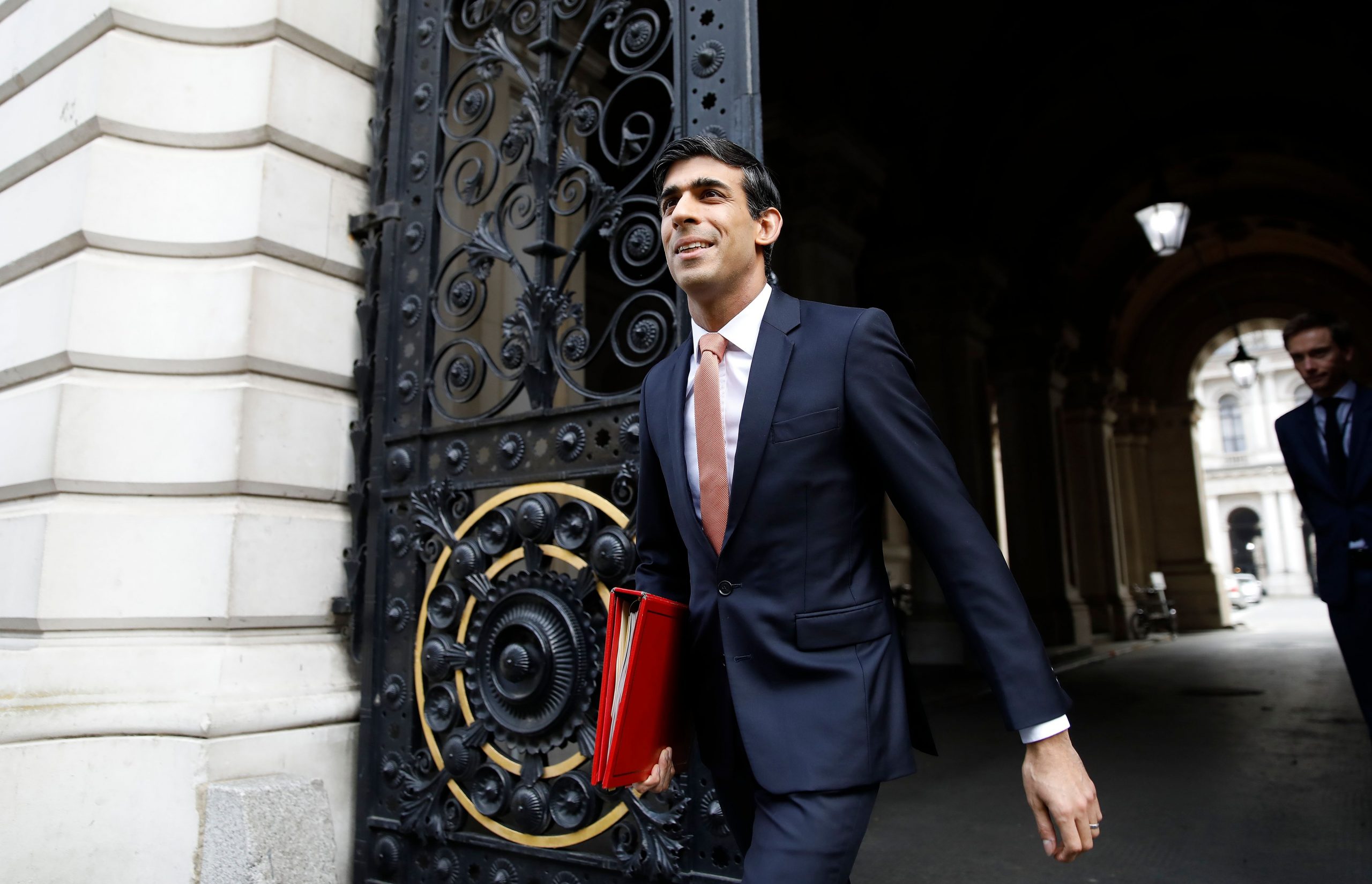Stamp duty holiday: When does the increased threshold end?


In July, Chancellor of the Exchequer Rishi Sunak announced changes to give property buyers a holiday from Stamp Duty Land Tax (SDLT), in an attempt to revitalise the UK economy.
As part of a wider set of changes, which were made in the autumn budget announcement, Rishi Sunak revealed that a stamp duty holiday would be coming into place, with the threshold for paying stamp duty increasing from £125,000 to £500,000.
His plans were initially meant to come into effect later this year but as the proposals were leaked, the chancellor was forced to bring forward the stamp duty holiday. It followed concerns that a holiday beginning in autumn would have stagnated the housing market in the meantime, with people opting to buy properties later in the year to benefit from the cut.
Other measures also announced at the time included a temporary VAT cut for pubs, restaurants and cafes to help protect the hospitality industry and plans to offer £1,000 to companies for each apprentice they take on, in a bid to resist high levels of unemployment.
But now as we come into the winter months, many people are wondering when these changes come to an end and the stamp duty rates are once again lowered.
So what can we expect from the changes being made to stamp duty in the 2020 autumn budget? And when does the increase come to an end?
When does stamp duty holiday end?
In July, the chancellor spoke from the House of Commons about the limitations of the holiday. He revealed that the stamp duty holiday would continue until March 31 2021, superseding expectations that the changes to stamp duty would only go on for six months.
Parenting advice, hot topics, best buys and family finance tips delivered straight to your inbox.
This follows months of losses for the housing market, who were affected during lockdown as people were encouraged to avoid moving house when possible.
Under the chancellor's new plan, it's expected that by the time the stamp duty holiday ends, nine out of ten people committed to buying a home will have paid no stamp duty at all.
Why is stamp duty being cut in the UK?
Those looking to buy a new property will be pleased to hear that under the chancellor’s plans, the £125,000 threshold for stamp duty will increase to as much as £500,000. Rishi Sunak said, "I have decided today to cut stamp duty. Right now there is no stamp duty on transactions below £125,000. Today I am increasing the threshold to half a million pounds."
While this means that the tax isn’t being totally removed, it does mean that you can buy a house for up to £500,000 without having to pay stamp duty at all. This would effectively boost the housing market, with conceivably more people looking to buy a house as stamp duty bills would fall by £4500 on average, with four out of 10 people buying a house not paying any stamp duty at all.
However, if you purchase a house over the £500,000 mark, then you will be liable for stamp duty on the property. To find out how much tax you could be paying, it's best to use a stamp duty calculator.
What is the threshold in the UK for 2020?

Stamp duty is calculated using rate bands, with the amount of tax you’ll have to pay varying depending on where your property falls within each band. Normally, the threshold to begin paying stamp duty is £125,000.
However under the changes that came into place on June 8, the threshold for stamp duty in the UK will be changed to £500,000 temporarily. As money expert Martin Lewis explained on Twitter, this would mean that "a £600,000 property pays 5% of £100,000 ie £5,000 rather than £20,000".
How to work out stamp duty
There are online calculators you can use to figure out how much you’ll owe after you buy a property, or you can calculate it yourself using the tax bands below, which are relevant to the normal thresholds of stamp duty in the UK. While the bands and percentages remain the same, they are not relevant under the changes made by the chancellor on July 8, which will last until March 31 2021, as the starting threshold for paying stamp duty is £500,000.
- For the first £125,000 of the purchase price, you’ll pay no stamp duty.
- For the next £125,000 - the portion from £125,001 to £250,000 - you’ll pay a tax of 2%.
- For the next £675,000 - the portion from £250,001 to £925,000 - you’ll pay a tax of 5%.
- For the next £575,000 - the portion from £925,001 to £1.5 million - you’ll pay 10%.
- For the remaining amount - the portion above £1.5 million - you’ll pay 12%.
- For example, if your new home costs £275,000, you’ll pay £3,750.
That’s 0% on the first £125,000, 2% on the next £125,000, and 5% on the final £25,000.
Where to find a stamp duty calculator
To work out how much stamp duty you owe normally or under the new stamp duty holiday changes in 2020, you can either use a stamp duty calculator or work it out yourself. This stamp duty calculator, which can be found online, has also been modified to reflect the changes made this year.
Stamp duty is taxed under many different bands, as explained above, and is calculated on the price of the property, according to the MoneyAdviceService.co.uk. Normally for example, if the house costs £275,000 then the stamp duty tax would be zero per cent on the first £125,000 as this is the threshold, then two percent on the next £125,000 and five per cent on the last £125,000. This would bring the payable stamp duty to £3,750.
However, as noted, under the changes that are being proposed by the chancellor, there would be no stamp duty payable on a property worth £275,000.
When did the changes to stamp duty start?
According to The Times, the chancellor finalised his plans to change stamp duty on Wednesday July 8, with changes coming into immediate effect.
The announcement in July was well received by the housing market, who saw shares increase in house-building construction companies and estate agents like Foxtons and Purplebricks.
Will first time buyers pay stamp duty in 2020?
Under the normal thresholds, if you're looking to buy a home for the first time, then you will pay no Stamp Duty Land Tax on any property worth up to £300,000 - saving buyers £5,000. However, under the stamp duty changes in 2020, first time buyers would be eligible for a stamp duty holiday of up to £500,000 just like everyone else.
So while first time buyers still have to pay Stamp Duty, it's not required for properties worth less than £300,000 or under the chancellor's changes, on properties worth up to £500,000.
What is the stamp duty charge?
Stamp Duty Land Tax (SDLT) works as a one-off tax that applies each time you buy a new property – whether that’s a second home or you’re a first time buyer. Normally a solicitor will arrange the payment for you and you must pay it shortly after the date you complete the purchase of the property.
The tax applies whether you’re buying a freehold (you own the land) or a leasehold (the freeholder owns the land) property, and whether you’re paying for it up front or with a mortgage plan.
Before Rishi Sunak’s proposals, if were buying a residential property or land that costs over £125,000 in England, Wales or Northern Ireland, you have to pay stamp duty.
If you live in Scotland, you still pay a lump sum tax when you purchase a property. However, it’s called the Land and Buildings Transaction Tax and the main distinction between the two is that it uses different rate thresholds to determine how much you pay.
Who pays stamp duty - the buyer or seller?

When you're looking to buy a property, stamp duty is one of the top things to consider as the law around who pays it is very specific. Many people believe that both parties will pay the property tax, but under UK law it is always the buyer who pays the stamp duty.
Most solicitors or conveyancers will arrange your stamp duty payment for you, although you can also do it yourself. Either way, the buyer is responsible for making sure the return is completed within the deadline to avoid a fine and the possibility of paying interest on the overdue payment.
Even if your new home costs under the threshold and you won’t be paying any stamp duty, you still need to file a return, unless the property costs less than £40,000.
When do you pay stamp duty on a house?
Unlike many of the other fees that need to paid before the final transaction for the house goes through, stamp duty is paid after the sale is complete. As of March 2019, buyers have 14 days to file their return and pay the stamp duty due.
The 14 days will begin from the date that the house purchase is finalised and if you don't file your return and pay the tax in time, then the HMRC could charge you with penalties and interest.

Grace Walsh is a health and wellbeing writer, working across the subjects of family, relationships, and LGBT topics, as well as sleep and mental health. A digital journalist with over six years experience as a writer and editor for UK publications, Grace is currently Health Editor for womanandhome.com and has also worked with Cosmopolitan, Red, The i Paper, GoodtoKnow, and more. After graduating from the University of Warwick, she started her career writing about the complexities of sex and relationships, before combining personal hobbies with professional and writing about fitness.